Culture of the United Kingdom

| Part of a series on the |
| Culture of the United Kingdom |
|---|
 |
|
|
Historic peoples
Modern ethnicities
|
|
Folklore
|
|
|
|
Music and Performing arts |
|
Media |
|
Symbols
|
The culture of the United Kingdom is influenced by its combined nations' history; its historically Christian religious life, its interaction with the cultures of Europe, the individual cultures of England, Wales and Scotland and the impact of the British Empire. The culture of the United Kingdom may also colloquially be referred to as British culture; Northern Ireland, though not geographically part of Great Britain, may still be considered as having a place within British culture. Although British culture is a distinct entity, the individual cultures of England, Scotland, Wales and Northern Ireland are diverse. There have been varying degrees of overlap and distinctiveness between these four cultures.[1]
British culture has been influenced by historical and modern migration, the historical invasions of Great Britain, and the British Empire. As a result of the British Empire, significant British influence can be observed in the language, law, culture and institutions of its former colonies, most of which are members of the Commonwealth of Nations. A subset of these states form the Anglosphere, and are among Britain's closest allies.[3][4] British colonies and dominions influenced British culture in turn, particularly British cuisine.[5]
Sport is an important part of British culture, and numerous sports originated in the country including cricket, football, tennis and rugby.[6] The UK has been described as a "cultural superpower",[7][8] and London has been described as a world cultural capital.[9][10] A global opinion poll for the BBC saw the UK ranked the third most positively viewed nation in the world (behind Germany and Canada) in 2013 and 2014.[11][12]
History
Throughout its history, the culture of Great Britain has primarily consisted of the separate native traditions of England, Scotland and Wales. With regard to cultural influences, prior to the expansion of the British Empire, the island had been most notably influenced by French culture (via the Normans), Scandinavian culture (via the Vikings) and Italian culture (via the Romans).
The arrival of Celtic and Germanic tribes influenced Britain's early development.[13][14] The Celtic peoples introduced unique languages, traditions, and social structures. Subsequently, the migrations of Germanic tribes, such as the Anglo-Saxons, further influenced Britain's cultural landscape. The ancient Roman occupation of Britain, lasting almost 400 years, also impacted the linguistic and cultural identity of Great Britain.[15]
Following the expansion of the British Empire, England, Scotland and Wales absorbed different peoples from around the world, and, post-World War II, Britain developed a more diverse cultural landscape through higher levels of immigration. Today, it has a sizable immigrant population, and encompasses the cultures of British people from various backgrounds, with South Asian, Continental European, African and Caribbean descent being most prevalent.[16]
Language
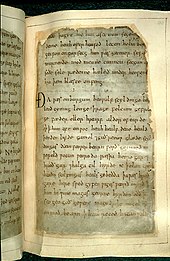
First spoken in
In Wales, all pupils at state schools must either be taught through the medium of Welsh or study it as an additional language until age 16, and the
Regional accents
Dialects and regional accents vary heavily amongst the four countries of the United Kingdom, as well as within the countries themselves. This is partially the result of the long history of immigration to the UK, for example Northern English dialects contain many words with Old Norse roots.[18] Scottish English, Welsh English, and Hiberno-Irish are varieties of English distinct from both English English and the native languages of those countries. Received Pronunciation is the Standard English accent in England and Wales, while in Scotland Scottish Standard English is a distinct dialect. Although these accents have a high social prestige, since the 1960s a greater permissiveness toward regional English varieties has taken hold in education.[19]
The great variety of British accents is often noted, with nearby regions often having highly distinct dialects and accents, for example there are large differences between Scouse and Mancunian despite Liverpool and Manchester being only 35 miles (56 km) apart.[20][21] Dialectal English is often found in literature, for example Emily Brontë's novel Wuthering Heights contains Yorkshire dialect.[22]
Arts
Literature
The United Kingdom inherited the literary traditions of England, Scotland and Wales. These include Arthurian literature and its Welsh origins, Norse-influenced Old English literature, the works of English authors Geoffrey Chaucer and William Shakespeare, and Scots works such as John Barbour's The Brus.
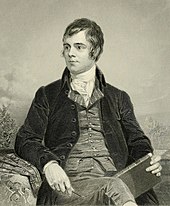
The early 18th century period of British literature is known as the Augustan Age and included the development of the novel. Daniel Defoe's Robinson Crusoe (1719) and Moll Flanders (1722) are often seen as the first English novels, however the development of the novel took place in a wider literary context that included the rise of prose satires – which reached a high point with Gulliver's Travels – and earlier foreign works like the Spanish Don Quixote.[24] Also linked to the Augustan period is Samuel Johnson's A Dictionary of the English Language. Published in 1755, it was viewed as the pre-eminent British dictionary until the completion of the Oxford English Dictionary 150 years later.[25]
The subsequent Romantic period showed a flowering of poetry comparable with the Renaissance 200 years earlier, and a revival of interest in vernacular literature. In Scotland the poetry of Robert Burns revived interest in Scots literature, and the Weaver Poets of Ulster were influenced by literature from Scotland. In Wales the late 18th century saw the revival of the eisteddfod tradition, inspired by Iolo Morganwg. The period also saw the publication of A Vindication of the Rights of Woman (1792), by Mary Wollstonecraft, is one of the earliest works of feminist philosophy.
The late Georgian and Victorian era saw a renewed focus on the novel. A key theme of these novels was social commentary. Early in the period Jane Austen satirised the lifestyle of the gentry and nobility, while the later novels of Charles Dickens often used humour and keen observations to criticise poverty and social stratification. The three Brontë sisters and George Eliot commented on Northern England and the Midlands respectively, though all four women wrote under male pen names during their lifetimes, partly to deflect anti-feminist criticism. Nevertheless, openly female authors achieved considerable success in the period, such as the predominantly religious poems of Elizabeth Barrett Browning and Christina Rossetti.
Rudyard Kipling exemplifies the British Empire's influence on British literature. His novels The Jungle Book and The Man Who Would Be King are both set in British India, the poem If— evokes the concept of the "stiff upper lip", while The White Man's Burden demonstrates a white supremacist Imperialist outlook.[26]

The contemporary British literary scene is marked by awards such as the
Theatre
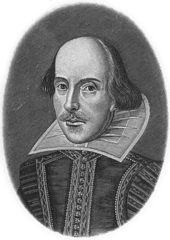
From its formation in 1707 the United Kingdom has had a vibrant tradition of theatre, much of it inherited from England, Scotland and Wales. The Union of the Crowns coincided with the decline of highbrow and provocative Restoration comedy in favour of sentimental comedy, domestic tragedy such as George Lillo's The London Merchant (1731), and by an overwhelming interest in Italian opera. Popular entertainment became more important in this period than ever before, with fair-booth burlesque and mixed forms that are the ancestors of the English music hall. These forms flourished at the expense of other forms of English drama, which went into a long period of decline. In Scotland the opposite occurred, with the emergence of specifically Scottish plays including John Home's Douglas and the works of Walter Scott, which included original plays as well as adaptations of his Waverley novels. The late 19th century saw revival of English theatre with arrival of Irishmen
The early twentieth century was dominated by
Contemporary British theatre is focused on the West End, London's major theatre district. The Theatre Royal, Drury Lane in the City of Westminster dates back to 1663, making it the oldest London theatre, however the Theatre Royal at the Bristol Old Vic is the oldest continually-operating theatre in the English speaking world, opening in 1768.[35] The musicals of Andrew Lloyd Webber have dominated the West End since the late 20th century, leading him to be dubbed "the most commercially successful composer in history".[36] A National Theatre of Scotland was set up in 2006.
Music
Classical music

British Baroque music was heavily influenced by continental fashions. This is exemplified by George Frideric Handel, a German-born naturalised British citizen whose choral music set British taste for the next two centuries. His operas also helped Britain challenge Italy as a centre of operatic production. Classical music attracted much attention from 1784 with the formation of the Birmingham Triennial Music Festival, which was the longest running classical music festival of its kind until the final concerts in 1912. Beyond this, the establishment of the London Philharmonic Society in 1813, Royal Academy of Music in 1822, and Irish Academy of Music in 1848 aided the professionalisation of British classical music and patronage of composers.
The Philharmonic Society was a strong supporter of the German Felix Mendelssohn, an early Romantic composer who also strongly influenced British music. In Ireland, John Field invented the nocturne and may have been an influence on Chopin and Liszt. A notable development of the mid- to late-nineteenth century was the resurgence of English-language opera and the establishment of several prominent orchestras, including the Royal Liverpool Philharmonic in 1840, Manchester-based Hallé in 1858, the Scottish Orchestra in 1891 and the City of Birmingham Symphony Orchestra in 1920. The most notable trend in classical music at the turn of the century was the nationalistic trend that developed. This was initially seen in works like The Masque at Kenilworth, which reconstructed an Elizabethan masque, but later took a pastoral turn under the influence of the British folk revival. Examplars of this period are Ralph Vaughan Williams' English Folk Song Suite, and Sir Alexander Mackenzie's Scottish Rhapsodies.
Modern and contemporary classical music takes a variety of forms. Composers such as
Popular music
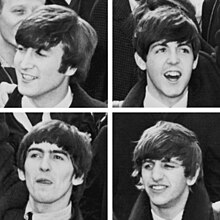
Popular commercial music in Britain can be traced back at least as far as the seventeenth-century broadside ballad, and also encompasses brass band music and music hall. Popular music in the modern sense began to emerge in the 1950s, as the American styles of jazz and rock and roll became popular. The skiffle revival was an early attempt to create a British form of American music, but it was the emergence of British rock and roll by the early 1960s that established a viable British popular music industry. Genres such as beat and British blues were re-exported to America by bands such as the Beatles and Rolling Stones, in a move that came to be called the British Invasion. The 1960s saw the development of heavy metal in Birmingham and the wider area. The development of blues rock helped differentiate rock and pop music, leading to the emergence of several sub-genres of rock in the 1970s. Glam rock was a particularly British genre that emphasised outrageous costumes, while the end of the decade saw the rise of punk, new wave, and post-punk bands. The influence of immigration could also be seen in the increased prominence of World music, particularly Jamaican music.
The 1980s were a successful decade in British pop, as a second
Folk and sub-national music

Problems playing these files? See media help.
In contrast to the comparatively homogeneous classical and pop genres, each nation of the UK has retained a distinct tradition of folk music. The traditional
The
Similarly, while the national anthem "God Save the King" and other patriotic songs such as "Rule, Britannia!" represent the United Kingdom, each of the four individual countries of the UK has its own patriotic hymns. For example, Jerusalem, Flower of Scotland, Land of My Fathers, and Danny Boy pertain exclusively to England, Scotland, Wales, and Northern Ireland respectively. These songs are often used at sporting events where each nation competes individually.
Cinema

Britain has had a significant film industry for over a century. While many films focus on British culture, British cinema is also marked by its interaction and competition with American and continental European cinema.
The UK was the location of the oldest surviving moving picture, Roundhay Garden Scene (1888), which was shot in Roundhay, Leeds by French inventor Louis Le Prince, while the first British film, Incident at Clovelly Cottage was shot in 1895.[39] The world's first colour motion picture was shot by Edward Raymond Turner in 1902.[40] British film production suffered in the 1920s in face of competition from American imports and a legal requirement for cinemas to show a set quota of British films, which encouraged poor-quality, low-cost productions to meet this demand. This had changed by the 1940s, when the government encouraged fewer, higher-quality films to be made. This era also saw the rise of Alfred Hitchcock, who soon moved to the US and become one of the twentieth century's most influential directors. During World War II the Crown Film Unit established a reputation for documentaries, while Powell and Pressburger began their influential and innovative collaboration.
The post-war period was a particular high point for British filmmaking, producing The Third Man and Brief Encounter, which the British Film Institute consider the best and second-best British films respectively. Laurence Olivier's 1948 Hamlet was the first British film to win the Academy Award for Best Picture. The 1950s saw a focus on popular domestic topics such as comedies, including the enduring Carry On series, and World War II epics such as The Dam Busters. At the end of the decade Hammer Films took advantage of relaxed censorship laws to begin their series of successful horror films. The beginning of the 1960s saw the British New Wave style develop, influenced by its French counterpart, that sought to depict a wider strata of society in a realistic manner. The 1960s also saw renewed American financial interest in British film, which particularly manifested itself in the development of historical epics, such as Best Picture winners Lawrence of Arabia and A Man for All Seasons; spy thrillers, including the first films in the James Bond franchise; and films based on 'swinging London' scene.
The 1970s saw a withdrawal of American support and a retrenchment in British cinema, though the decade did see culturally important productions such as the horror
American investment again increased in the 1990s, and the success of Four Weddings and a Funeral saw romantic comedies rise in popularity. Merchant Ivory Productions, boosted by the Oscars success of the previous decade's period pieces, continued to produce films in the same vein. American studios also began to base the production of Hollywood films in the UK, encouraged by tax incentives. 1996's Trainspotting led to increased interest in regional, particularly Scottish, cinema. While American-funded films continued their influence in the 2010s, domestic European co-productions also received acclaim. The Queen was British-French production for which Helen Mirren won Best Actress, while the UK Film Council funded The King's Speech, which won Best Picture in 2011. Asian British cinema has risen in prominence since 1999, when East is East was a mainstream success on a low budget.
Broadcasting

Launched in 1955, ITV is the oldest commercial television network in the UK.
International football tournaments, such as the

Have I Got News for You and Mock the Week are the two longest running satirical panel shows. Satire also features heavily in the Grand Theft Auto video game series which has been ranked among Britain's most successful exports.[45] The slapstick and double entendre of Benny Hill also achieved very high ratings on British television, as did the physical humour of Mr. Bean. Popular comedy duos in television include The Two Ronnies and Morecambe and Wise, with both shows featuring memorable sketches. Jeeves and Wooster starred Hugh Laurie as Bertie Wooster, an airy, nonchalant, gormless, idle young gentleman and Stephen Fry as Jeeves, his calm, well-informed, and talented valet. Created by and starring Rik Mayall as Richie and Adrian Edmondson as Eddie, Bottom features two crude, perverted flatmates with no jobs and little money, which is noted for its chaotic, nihilistic humour and violent comedy slapstick.[46] Steve Coogan created the character Alan Partridge, a tactless and inept television presenter who often insults his guests and whose inflated sense of celebrity drives him to shameless self-promotion. Da Ali G Show starred Sacha Baron Cohen as a faux-streetwise poseur Ali G from west London, who would conduct real interviews with unsuspecting people, many of whom are celebrities, during which they are asked absurd and ridiculous questions.
Animator Nick Park created the Wallace and Gromit characters at Aardman Animations studio in Bristol. They feature in A Grand Day Out (1989), The Wrong Trousers (1993) and A Close Shave (1995), which all have 100% positive ratings on the aggregation site Rotten Tomatoes, while A Matter of Loaf and Death was the most watched television programme in the UK in 2008. Aardman also produce the kid's show Shaun the Sheep. One of the most popular children's shows originating in the UK is Thomas & Friends (based on The Railway Series books by Wilbert Awdry), which has become the number one licensed preschool property in the world.[47] Other popular children's shows include Postman Pat, Fireman Sam, Teletubbies, Bob the Builder and Peppa Pig
First airing in 1958,
Debuting in 1982,
The United Kingdom has a large number of national and local radio stations which cover a great variety of programming. The most listened to stations are the five main national
The idea for a
- List of radio stations in the United Kingdom
- List of television stations in the United Kingdom
Freedom of the press was established in Great Britain in 1695.[50] Popular national newspapers include The Times, Financial Times, The Guardian, The Daily Telegraph and The Independent.
Founded by publisher
A pioneer of children's publishing, John Newbery made children's literature a sustainable and profitable part of the literary market.[55] The History of Little Goody Two-Shoes was published by Newbery in 1765.[55] Founded by Sir Allen Lane in 1935, Penguin Books revolutionised publishing in the 1930s through its inexpensive paperbacks, bringing high-quality paperback fiction and non-fiction to the mass market.[56] Formed in 1940, Puffin Books is the children's imprint of Penguin Books. Barbara Euphan Todd's scarecrow story, Worzel Gummidge, was the first Puffin story book in 1941.[57]
The
Copyright laws originated in Britain with the Statute of Anne (also known as the Copyright Act 1709), which outlined the individual rights of the artist. A right to benefit financially from the work is articulated, and court rulings and legislation have recognised a right to control the work, such as ensuring that the integrity of it is preserved.[60] The Statute of Anne gave the publishers rights for a fixed period, after which the copyright expired.[61]
Visual arts

From the creation of the United Kingdom, the
Pictorial satirist
The late 18th century and the early 19th century was perhaps the most radical period in British art, producing William Blake (1757–1827), John Constable (1776–1837) and J. M. W. Turner (1775–1851), three of the most influential British artists, each of whom have dedicated spaces allocated for their work at the Tate Britain.[64] Named after Turner, the Turner Prize (created in 1984) is an annual award presented to a British visual artist under the age of 50.
The Pre-Raphaelite Brotherhood (PRB) achieved considerable influence after its foundation in 1848 with paintings that concentrated on religious, literary, and genre subjects executed in a colourful and minutely detailed style. PRB artists included John Everett Millais, Dante Gabriel Rossetti and subsequently Edward Burne-Jones. Also associated with it was the designer William Morris, whose efforts to make beautiful objects affordable (or even free) for everyone led to his wallpaper and tile designs to some extent defining the Victorian aesthetic and instigating the Arts and Crafts movement.
Visual artists from the UK in the 20th century include
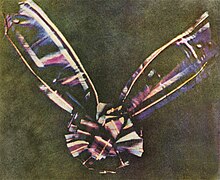
The auction was revived in 17th- and 18th-century England when auctions by candle began to be used for the sale of goods and leaseholds, some of which were recorded in Samuel Pepys's diary in 1660.[67] Headquartered in King Street, London, Christie's, the world's largest auction house, was founded in 1766 by auctioneer James Christie in London. Known for his thickly impasted portrait and figure paintings, Lucian Freud was widely considered the pre-eminent British artist of his time. Freud was depicted in Francis Bacon's 1969 oil painting, Three Studies of Lucian Freud, which was sold for $142.4 million in November 2013, the highest price attained at auction to that point.[68]
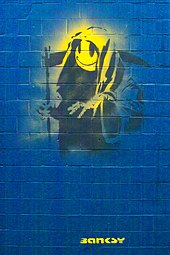
Randolph Caldecott, Walter Crane, Kate Greenaway, John Tenniel, Aubrey Beardsley, Roger Hargreaves, Arthur Rackham, John Leech, George Cruikshank and Beatrix Potter were notable book illustrators. Posters have played a significant role in British culture. Designed by Alfred Leete in 1914 as a recruitment poster for the British Army, "Lord Kitchener Wants You" is the most famous British recruitment poster ever produced and an iconic and enduring image of World War I.[69] Produced by the British government in 1939 for World War II, the Keep Calm and Carry On motivational poster is now seen as "not only as a distillation of a crucial moment in Britishness, but also as an inspiring message from the past to the present in a time of crisis".[70]
In the late 1960s, British
- Design
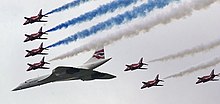
In 2006, 37 years after its first test flight,
Sir Morien Morgan led research into supersonic transport in 1948 that culminated in the Concorde passenger aircraft.[74] In November 1956 he became chairman of the newly formed Supersonic Transport Aircraft Committee which funded research into supersonic transport at several British aviation firms though the 1950s. By the late 1950s, the committee had started the process of selecting specific designs for development, and after the forced merger of most aviation firms in 1960, selected the Bristol Type 223, designed by Archibald Russell, as the basis for a transatlantic design.[74]
The Brit Awards statuette for the BPI's annual music awards, which depicts Britannia, the female personification of Britain, is regularly redesigned by some of the best known British designers, stylists and artists, including Dame Vivienne Westwood, Damien Hirst, Tracey Emin, Sir Peter Blake, Zaha Hadid and Sir Anish Kapoor.[75]
Performing arts, carnivals, parades
Large outdoor
A staple of British seaside culture, the quarrelsome couple
The Edinburgh Festival Fringe is the world's largest arts festival. Established in 1947, it takes place in Scotland's capital during three weeks every August alongside several other arts and cultural festivals. The Fringe mostly attracts events from the performing arts, particularly theatre and comedy, although dance and music also feature. The Notting Hill Carnival is an annual event that has taken place on the streets of Notting Hill, London since 1966.[83] Led by the British African-Caribbean community, the carnival has attracted around one million people, making it Britain's biggest street festival and one of the largest in the world.[83] Also of note is the extensive impact of Irish culture for St. Patrick's Day. The largest St Patrick's Day Parade takes place in Digbeth, Birmingham, where there is a strong Irish community.
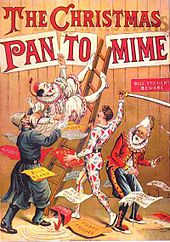

Pantomime story lines and scripts are almost always based on traditional children's stories: some of the popular British stories featured include

Architecture
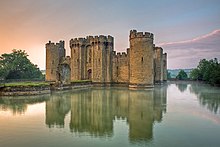
The

In the 1680s, Downing Street was built by Sir George Downing, and its most famous address 10 Downing Street, became the residence of the Prime Minister in 1730.[97] One of the best-known English architects working at the time of the foundation of the United Kingdom was Sir Christopher Wren. He was employed to design and rebuild many of the ruined ancient churches of London following the Great Fire of London. His masterpiece, St Paul's Cathedral, was completed in the early years of the United Kingdom.[98] Buckingham Palace, the London residence of the British monarch, was built in 1705. Both St Paul's Cathedral and Buckingham Palace use Portland stone, a limestone from the Jurassic period quarried in the Jurassic Coast in Portland, Dorset, which is famous for its use in British and world architecture.[99]
In the early 18th century Baroque architecture – popular in Europe – was introduced, and Blenheim Palace was built in this era. However, Baroque was quickly replaced by a return of the Palladian form. The Georgian architecture of the 18th century was an evolved form of Palladianism. Many existing buildings such as Woburn Abbey and Kedleston Hall are in this style. Among the many architects of this form of architecture and its successors, neoclassical and romantic, were Robert Adam, Sir William Chambers, and James Wyatt.
The aristocratic
In the early 19th century the romantic
Following the building of the world's first seaside pier in July 1814 in Ryde, Isle of Wight off the south coast of England, the pier became fashionable at seaside resorts in the UK during the Victorian era, peaking in the 1860s with 22 being built.[101] Providing a walkway out to sea, the seaside pier is regarded as among the finest Victorian architecture, and is an iconic symbol of the British seaside holiday.[101] By 1914, there were over 100 piers around the UK's coasts.[101] Today there are 55 seaside piers in the UK.[101] Tower Bridge (half a mile from London Bridge) opened in 1895.
At the beginning of the 20th century a new form of design, arts and crafts, became popular; the architectural form of this style, which had evolved from the 19th-century designs of such architects as George Devey, was championed by Edwin Lutyens. Arts and crafts in architecture is characterised by an informal, non-symmetrical form, often with mullioned or lattice windows, multiple gables and tall chimneys. This style continued to evolve until World War II. After that war, reconstruction went through a variety of phases, but was heavily influenced by Modernism, especially from the late 1950s to the early 1970s. Many bleak town centre redevelopments—criticised for featuring hostile, concrete-lined "windswept plazas"—were the fruit of this interest, as were many equally bleak public buildings, such as the Hayward Gallery.
Many Modernist-inspired town centres are today being redeveloped:
Described by
Comics
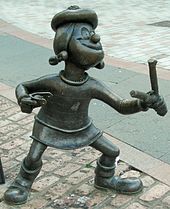
British comics in the early 20th century typically evolved from illustrated
In 1954
Created by
In the 1980s, a resurgence of British writers and artists gained prominence in mainstream comic books, which was dubbed the "
Prominent comic book artists include
Folklore
Robin Hood and the ballad tradition
Much of the folklore of the United Kingdom pre-dates the 18th century. Though some of the characters and stories are present throughout all of the UK, most belong to specific countries or regions. Common folkloric beings include
During the
The
English fairy tale
Pirates
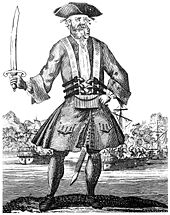
Published in 1724,
Superstitions
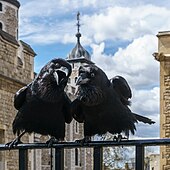
The Gremlin is part of Royal Air Force folklore dating from the 1920s, with "gremlin" being RAF slang for a mischievous creature that sabotages aircraft, meddling in the plane's equipment.[128] Legendary figures from 19th-century London whose tales have been romanticised include Sweeney Todd, the murderous barber of Fleet Street (accompanied with Mrs. Lovett who sells pies made from Todd's victims), and serial killer Jack the Ripper. On 5 November, people in Britain celebrate Guy Fawkes Night by making bonfires and lighting fireworks in commemoration of the foiling of Guy Fawkes' Gunpowder Plot, which became an annual event after the Observance of 5th November Act 1605 was passed.[129] Guy Fawkes masks are an emblem for anti-establishment protest groups.[130]
Traditional non-religious holidays

Halloween is a traditional and much celebrated holiday in Scotland and Ireland on the night of 31 October.[131] The name "Halloween" is first attested in the 16th century as a Scottish shortening of the fuller All-Hallows-Even,[132] and according to some historians has its roots in the Gaelic festival Samhain, when the Gaels believed the border between this world and the otherworld became thin, and the dead would revisit the mortal world.[133] In 1780, Dumfries poet John Mayne makes note of pranks at Halloween; "What fearfu' pranks ensue!", as well as the supernatural associated with the night, "Bogies" (ghosts).[134] Robert Burns' 1785 poem "Halloween" is recited by Scots at Halloween, and Burns was influenced by Mayne's composition.[134]
In Scotland and Ireland, traditional Halloween customs include

National parks, museums, libraries, and galleries
Heritage administration
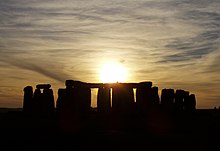
Each country has its own body responsible for heritage matters.
Historic Environment Scotland is the executive agency of the Scottish Government, responsible for historic monuments in Scotland, such as Stirling Castle. The Old and New Town of Edinburgh is a notable Scottish World Heritage site. Balmoral Castle is the main Scottish residence of the British monarch. The Wallace Monument in Stirling contains artifacts believed to have belonged to Sir William Wallace, including the Wallace Sword. The Rob Roy Way, named after Scottish folk hero and outlaw Rob Roy MacGregor, is a long-distance footpath that runs for 92 miles. A statue of Robert the Bruce and a large monument and visitor centre (operated by the National Trust for Scotland) is located in Bannockburn near the site of the Battle of Bannockburn.[148]
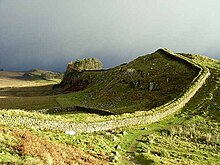
Many of Wales' great castles, such as the
Museums and galleries
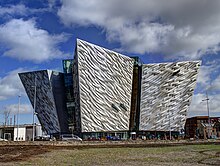
The
The Titanic Belfast museum, a visitor attraction in the Titanic Quarter, east Belfast, Northern Ireland on the regenerated site of the shipyard where Titanic was built, was opened to the public in 2012.[151] The architecture is a tribute to Titanic itself, with the external facades a nod to the enormous hull of the ocean liner.
The first
The most senior art gallery is the
Libraries
The
The National Library of Scotland in Edinburgh holds 7 million books, 14 million printed items (such as the last letter written by Mary, Queen of Scots) and over 2 million maps.[156] The National Library of Wales is the national legal deposit library of Wales, and holds over 6.5 million books, portraits, maps and photographic images in Wales.[157]
Historical markers
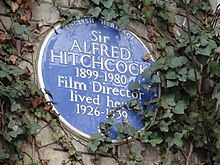
The first plaque was unveiled in 1867 to commemorate
Science and technology
From the time of the Scientific Revolution, England and Scotland, and thereafter the United Kingdom, have been prominent in world scientific and technological development. The Royal Society serves as the national academy for sciences, with members drawn from different institutions and disciplines. Formed in 1660, it is one of the oldest learned societies still in existence.[160]

Figures from the UK have contributed to the development of most major branches of science.
Naturalist
Other 19th- and early 20th-century British pioneers in their field include
).Scholarly descriptions of dinosaur bones first appeared in the late 17th-century England. Between 1815 and 1824, William Buckland discovered fossils of Megalosaurus and became the first person to describe a dinosaur in a scientific journal. The second dinosaur genus to be identified, Iguanodon, was discovered in 1822 by Mary Ann Mantell. In 1832, Gideon Mantell discovered fossils of a third dinosaur, Hylaeosaurus. Owen recognised that the remains of the three new species that had been found so far shared a number of distinctive features. He decided to present them as a distinct taxonomic group, dinosaurs.[164]
A crucial advance in the development of the flush toilet was the S-trap invented by Alexander Cumming in 1775 – it uses the standing water to seal the outlet of the bowl, preventing the escape of foul air from the sewer.[168] In 1824 Charles Macintosh invented the waterproof raincoat; the Mackintosh (mac) is named after him.[168] William Sturgeon invented the electromagnet in 1824.[169] The first commercial electrical telegraph was co-invented by Sir William Fothergill Cooke and Charles Wheatstone. They patented it in May 1837 as an alarm system, and it was first successfully demonstrated on 25 July 1837 between Euston and Camden Town in London.[170]
Postal reformer

Historically, many of the UK's greatest scientists have been based at either
Technologically, the UK is also amongst the world's leaders. Historically, it was at the forefront of the
Engineer Isambard Kingdom Brunel, another major figure of the Industrial Revolution, was placed second in a 2002 BBC nationwide poll to determine the "100 Greatest Britons".[176] He created the Great Western Railway, as well as famous steamships including the SS Great Britain, the first propeller-driven ocean-going iron ship, and SS Great Eastern which laid the first lasting transatlantic telegraph cable. Josiah Wedgwood pioneered the industrialisation of pottery manufacture.[177] In 1820, Scottish road builder John McAdam invented "macadamisation" for building roads with a smooth hard surface. In 1901, Edgar Purnell Hooley added tar to the mix and named it Tarmac (short for tarmacadam).[178]

Probably the greatest driver behind the modern use of concrete was Smeaton's Tower built by John Smeaton in the 1750s. The third Eddystone Lighthouse (the world's first open ocean lighthouse), Smeaton pioneered the use of hydraulic lime in concrete. Scotsman Robert Stevenson constructed the Bell Rock Lighthouse in the early 1800s. Situated 11 miles off east Scotland, it is the world's oldest surviving sea-washed lighthouse. Portland cement, the most common type of cement in general use around the world as a basic ingredient of concrete, was developed in England in the 19th century. It was coined by Joseph Aspdin in 1824 (he named it after Portland stone), and further developed by his son William Aspdin in the 1840s.
The UK has produced some of the most famous ships in the world:
Since then, the UK has continued this tradition of technical creativity.

The prototype
Introduced in 1952, the de Havilland Comet was the world's first commercial jet airliner.[184] Operated by British Overseas Airways Corporation (which merged with other British operators to form today's British Airways), on 2 May 1952 the flight registered G-ALYS took off with fare-paying passengers and inaugurated scheduled service from London to Johannesburg.[184]
In 1952,
Industrial Revolution
The
Historian Jeremy Black states, "an unprecedented explosion of new ideas, and new technological inventions, transformed our use of energy, creating an increasingly industrial and urbanised country. Roads, railways and canals were built. Great cities appeared. Scores of factories and mills sprang up. Our landscape would never be the same again. It was a revolution that transformed not only the country, but the world itself."[187]

Pottery manufacturer
Described as "natural capitalists" by the
Cars
The UK has had a long history of car making. Some of the best known British brands are
Religion
Forms of

William Tyndale's 1520s translation of the Bible was the first to be printed in English, and was a model for subsequent English translations, notably the King James Version in 1611. The Book of Common Prayer of 1549 was the first prayer book to include the complete forms of service for daily and Sunday worship in English, and the marriage and burial rites have found their way into those of other denominations and into the English language.
In 17th-century England, the
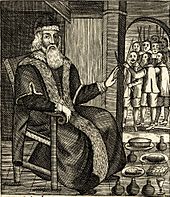
Protests followed as pro-Christmas rioting broke out in several cities; and for weeks
Following the Restoration, Poor Robins Almanack contained the lines:
- Now thanks to God for Charles return
- Whose absence made old Christmas mourn
- For then we scarcely did it know
- Whether it Christmas were or no.[204]
The diary of James Woodforde, from the latter half of the 18th century, details Christmas observance and celebrations associated with the season over a number of years.[205]
In the early 19th century, writers imagined Tudor Christmas as a time of heartfelt celebration. In 1843, Charles Dickens wrote the novel A Christmas Carol that helped revive the "spirit" of Christmas and seasonal merriment.[206][207] Dickens sought to construct Christmas as a family-centred festival of generosity, linking "worship and feasting, within a context of social reconciliation."[208] Superimposing his humanitarian vision of the holiday, termed "Carol Philosophy",[209] Dickens influenced many aspects of Christmas celebrated today in Western culture, such as family gatherings, seasonal food and drink, dancing, games, and a festive generosity of spirit.[210] A prominent phrase from the tale, "Merry Christmas", was popularised following its publication.[211] The term Scrooge became a synonym for miser, with "Bah! Humbug!" dismissive of the festive spirit.[207] Tiny Tim says "God bless us, every one!" which he offers as a blessing at Christmas dinner. Dickens repeats the phrase at the end of the story; symbolic of Scrooge's change of heart.

The revival of the
In the UK, the
While
Politics and government
The Crown and parliament
The UK has a
The UK's two major political parties are the Labour Party and the Conservative Party, who between them won 568 out of 650 seats in the House of Commons at the most recent general election. Currently, the third biggest party in terms of seats in the Commons is the Scottish National Party (SNP). At the most recent election, the SNP won 48 out of the 59 Scottish constituencies. The Liberal Democrats, or Lib Dems, were the fourth largest, at 11 seats. One seat was won by the Green Party. The remaining seats were won by regional parties, namely Plaid Cymru (Wales), the Alliance Party of Northern Ireland, the Social Democratic and Labour Party, Democratic Unionist Party, and Sinn Féin (Northern Ireland).

A prominent part of British political culture, Prime Minister's Questions – often referred to as "PMQs" – is held every Wednesday at noon when the House of Commons is sitting. The Prime Minister spends around half an hour responding to questions from Members of Parliament (MPs). In questioning the policies of government ministers, MP Amber Rudd states "PMQs is central to our democracy".[221] Due to the drama of the sessions, PMQs is among the best-known parliamentary business in the country. It is broadcast live on BBC News, Sky News and BBC Parliament television channels, as well as streamed online by many news outlets via numerous services, such as Twitch or YouTube.
The United Kingdom has an
The law
British constitutional documents include
According to 2016 figures from the Ministry of Justice, there is a 35% chance of people in England and Wales being summoned for jury duty over the course of their lifetime. In Scotland the percentage is higher due to Scotland having a lower population as well having juries made up of fifteen people as opposed to twelve in England and Wales.[225]

The 17th-century English patriot John Hampden was a leading parliamentarian involved in challenging the authority of Charles I when he refused to be taxed for ship money in 1637, and was one of the Five Members whose attempted unconstitutional arrest by the King in the House of Commons in 1642 sparked the English Civil War. The wars established the constitutional rights of parliament, a concept legally established as part of the Glorious Revolution in 1688 and the subsequent Bill of Rights 1689. Since that time, no British monarch has entered the House of Commons when it is sitting.[227] Hampden is annually commemorated at the State Opening of Parliament by the British monarch when the doors of the House of Commons are slammed in the face of the monarch's messenger, symbolising the rights of Parliament and its independence from the monarch.[227]
Other important British political figures include Sir
Robert Walpole is generally regarded as the first British Prime Minister (1721–1742). Twice Prime Minister, Sir Robert Peel, founded the Conservative party (which was expanded by Benjamin Disraeli), and created the modern police force.[231] Margaret Thatcher was the first female British Prime Minister (1979–1990). She became known as the "Iron Lady", a term coined by a Soviet journalist for her uncompromising politics and leadership style. In 1938, Neville Chamberlain believed he had secured "Peace for our time" with Germany, a year before WWII broke out.
English poet
Honours system
The
Historically a
A few examples of knights are Sir Nicholas Winton: for "services to humanity, in saving Jewish children from Nazi occupied Czechoslovakia",[240] Sir Elton John: for "services to music and charitable services", Sir Ridley Scott: for "services to the British film industry",[241] and Sir Richard Branson: for "services to entrepreneurship".[242] Examples of dames are: actress Dame Julie Andrews and singer Dame Shirley Bassey: both for "services to the performing arts", actress Dame Joan Collins: for "services to charity", and Dame Agatha Christie: for "contribution to literature".[243]
Counties
The suffix "
Units of measurement
Use of the British
Britain has been transitioning to metric since 1965, when the UK Government announced financial support for metrication with a target of 10 years.[248] When the UK joined the European Economic Community in 1973, the UK re-affirmed its commitment to metrication,[248] but in 2007, the European Commission abandoned completely the deadline for full metrication in the UK.[249]
Driving
By custom and law, traffic in Britain
Cuisine
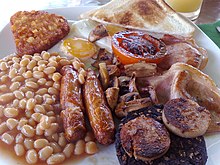
Each country within the United Kingdom has its own specialities. Traditional examples of
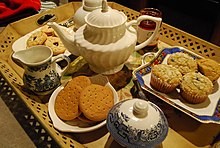

A quintessential British custom,
The first English recipe for
Sausages are commonly eaten as
Home
The
The
Initially created to draw in pre-literate drinkers,
On Christmas Day, goose was previously served at
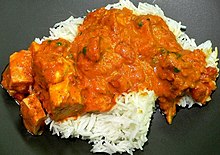
The earliest recipe for the

The
Sport
Most of the major sports have separate administrative structures and national teams for each of the
Football
Both in participation and viewing, the
The four home nations have produced some of the greatest players in the game's history, including, from England,

The best-placed teams in the domestic leagues of England and Scotland qualify for Europe's premier competition, the
The practice of "jumpers for goalposts" alludes to

Problems playing this file? See media help.
Football in Britain is renowned for the intense rivalries between clubs and the passion of the supporters, which includes a tradition of
Throughout the UK,
Golf
The modern game of golf originated in Scotland, with the Fife town of St Andrews known internationally as the "home of golf".[305] and to many golfers the Old Course, an ancient links course dating to before 1574, is considered to be a site of pilgrimage.[306] In 1764, the standard 18 hole golf course was created at St Andrews when members modified the course from 22 to 18 holes.[307] Golf is documented as being played on Musselburgh Links, East Lothian, Scotland as early as 2 March 1672, which is certified as the oldest golf course in the world by Guinness World Records.[308] The oldest known rules of golf were compiled in March 1744 in Leith.[309]
The oldest golf tournament in the world, and the first major championship in golf, The Open Championship, first took place in Ayrshire, Scotland in 1860, and today it is played on the weekend of the third Friday in July.[310] Golf's first superstar Harry Vardon, a member of the fabled Great Triumvirate who were pioneers of the modern game, won the Open a record six times. Since the 2010s, three Northern Irish golfers have had major success; Graeme McDowell, Darren Clarke and four time major winner Rory McIlroy.[311] The biennial golf competition, the Ryder Cup, is named after English businessman Samuel Ryder who sponsored the event and donated the trophy.[312] Sir Nick Faldo is the most successful British Ryder Cup player.
Rugby
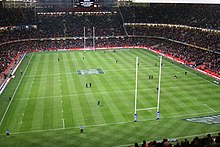
In 1845,
Tennis
The modern game of
Boxing

The
Cricket

The modern game of
Horse racing
Originating in 17th and 18th-century England, the Thoroughbred is a horse breed best known for its use in horse racing. Horse racing was popular with the aristocrats and royalty of British society, earning it the title "Sport of Kings".[323] Named after Edward Smith-Stanley, 12th Earl of Derby, The Derby was first run in 1780. The race serves as the middle leg of the Triple Crown, preceded by the 2000 Guineas and followed by the St Leger. The name "Derby" has since become synonymous with great races all over the world, and as such has been borrowed many times in races abroad.[324]
The
Bolton company
Motor sports
The
National sporting events
Other major sporting events in the UK include the London Marathon, and The Boat Race on the River Thames. The most successful male rower in Olympic history, Steve Redgrave won gold medals at five consecutive Olympic Games. Cycling is a popular physical activity in the UK. In 1888, inventor Frank Bowden founded the Raleigh Bicycle Company, and by 1913, Raleigh was the biggest bicycle manufacturing company in the world. The Raleigh Chopper was named in the list of British design icons. In 1965 Tom Simpson became the first British world road race champion, and in 2012 Bradley Wiggins became the first British Tour de France winner. Chris Froome has subsequently won the Tour de France four times (2013, 2015, 2016 and 2017). Welsh cyclist Geraint Thomas won in 2018. Sprint specialist Mark Cavendish has won thirty Tour de France stages, putting him second on the all-time list.
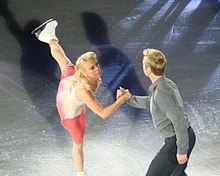
In
At the 1988 Winter Olympics, ski jumper
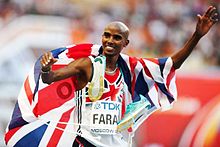
A great number of major sports originated in the United Kingdom, including association football, golf, tennis,
Bodybuilder Reg Park was Mr Britain in 1946 and became Mr Universe in 1951, 1958 and 1965.[331] Gaelic football is very popular in Northern Ireland, with many teams from the north winning the All-Ireland Senior Football Championship since the early 2000s. William Penny Brookes was prominent in organising the format for the modern Olympic Games, and in 1994, then IOC President Juan Antonio Samaranch laid a wreath on Brooke's grave, and said, "I came to pay homage and tribute to Dr Brookes, who really was the founder of the modern Olympic Games".[332]
Participation in women's team sport (in addition to profile in the media) has seen a rapid increase in recent years. Popular women's team sports include
Sub-national sports
The
Healthcare

Each of the four countries of the UK has a publicly funded health care system referred to as the National Health Service (NHS). The terms "National Health Service" or "NHS" are also used to refer to the four systems collectively. All of the services were founded in 1948, based on legislation passed by the Labour Government that had been elected in 1945 with a manifesto commitment to implement the Beveridge Report recommendation to create "comprehensive health and rehabilitation services for prevention and cure of disease".[334]
The NHS was born out of a long-held ideal that good healthcare should be available to all, regardless of wealth. At its launch by the then minister of health, Aneurin Bevan, on 5 July 1948, it had at its heart three core principles: That it meet the needs of everyone, that it be free at the point of delivery, and that it be based on clinical need, not ability to pay.[335] The NHS had a prominent slot during the 2012 London Summer Olympics opening ceremony directed by Danny Boyle, being described as "the institution which more than any other unites our nation", according to the programme.[336] Cancer Research UK, Alzheimer's Research UK and Together for Short Lives are among hundreds of health charities in the UK.
Pets
Statistics

In the UK, about 40% of the population own a pet. The top pets in the UK for 2018 and 2019 are:[340]
- Dogs: 25%
- Cats: 17%
- Rabbits, indoor birds, guinea pigs, hamsters: ≈1%
- Tortoises and Turtles: 0.7%
- Lizards: 0.6%
However, the population of pets in the UK declined from 71 million in 2013 (a significant peak) to 51 million in 2018.[341] This decline has seen some reversal as a result of the COVID-19 pandemic; an article published in May 2021 stated that a total of 3.2 million households in the UK had acquired a pet since the start of the pandemic, according to the Pet Food Manufacturers' Association.[342]
History
Founded in 1824, the
The British Shorthair cat is the most popular pedigreed breed in its native country, as registered by the UK's Governing Council of the Cat Fancy (GCCF). The breed's broad cheeks and relatively calm temperament make it a frequent media star. The cat's profile reads: "When gracelessness is observed, the British Shorthair is duly embarrassed, quickly recovering with a 'Cheshire cat smile'".[344] There are almost one million horses and ponies in the UK, with popular native breeds including Clydesdale horse (used as drum horses by the British Household Cavalry), Thoroughbred (used in horse racing), Cleveland Bay (pull carriages in royal processions), Highland pony and Shetland pony.
The UK's indigenous dog breeds include the Bulldog, Jack Russell Terrier, Golden Retriever, Yorkshire Terrier, Cavalier King Charles Spaniel, Airedale Terrier, Beagle, Border Collie, Staffordshire Bull Terrier, English Cocker Spaniel, Scottish Terrier, Welsh Corgi, Bullmastiff, Greyhound, English Springer Spaniel and Old English Sheepdog.
The Kennel Club, with its headquarters in London, is the oldest kennel club in the world, and acts as a lobby group on issues involving dogs in the UK. Its main objectives are to promote the general improvement of dogs and responsible dog ownership.[345] Held since 1891, Crufts is an annual dog show in the UK. The event takes place over four days in early March. In 1928, the very first winner of Best in Show at Crufts was Primley Sceptre, a greyhound.
National costume and dress
As a

Certain military
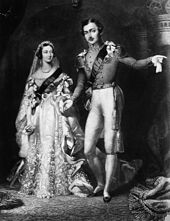
British sensibilities have played an influential role in world clothing since the 18th century. Particularly during the
The tradition of a
Fashion
London, as one of the world's four fashion capitals, is host to the London Fashion Week – one of the 'Big Four' fashion weeks.[358] Organised by the British Fashion Council, the event takes place twice each year, in February and September. The current venue for most of the "on-schedule" events is Somerset House in central London, where a large marquee in the central courtyard hosts a series of catwalk shows by top designers and fashion houses, while an exhibition, housed within Somerset House itself, showcases over 150 designers. However, many "off-schedule" events, such as On|Off and Vauxhall Fashion Scout, are organised independently and take place at other venues in central London.
British designers whose collections have been showcased at the fashion week include
Fashion designer
Symbols, flags, and emblems
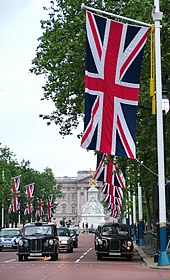
The United Kingdom as a whole has a number of national symbols, as do its constituent nations. The
The UK does not have a floral emblem, but each nation does. The
Traditional communication and greeting cards
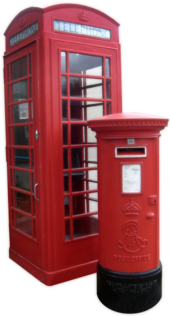
A familiar sight throughout the UK, the
The world's first
The sending and receiving of greeting cards is an established tradition in the UK, with card sending or card display in the home being an important part of British culture.[368]
Sending Valentine's Day cards became hugely popular in Britain in the late 18th century, a practice which has since spread to other nations.[372] The day first became associated with romantic love within the circle of Geoffrey Chaucer in the 14th century, when the tradition of courtly love flourished.[373] In Chaucer's Parlement of Foules (1382) he wrote; For this was on seynt Volantynys day. When euery bryd comets there to chese his make.[373] The modern cliché Valentine's Day poem can be found in the 1784 English nursery rhyme Roses Are Red; "The rose is red, the violet's blue. 'The honey's sweet, and so are you. Thou art my love and I am thine. I drew thee to my Valentine."[374]
In 1797, a British publisher issued The Young Man's Valentine Writer which contained scores of suggested sentimental verses for the young lover unable to compose his own. In 1835, 60,000 Valentine cards were sent by post in the UK, despite postage being expensive.[375] A reduction in postal rates (with the 1840 invention of the postage stamp, the Penny Black) increased the practice of mailing Valentines, with 400,000 sent in 1841.[376] In the UK just under half the population spend money on gifts.[377] Other popular occasions for sending greeting cards in the UK are birthdays, Mother's Day, Easter and Father's Day.[369]
Education
Each country of the United Kingdom has a separate education system. Power over education matters in Scotland, Wales and Northern Ireland is devolved but education in England is dealt with by the British government since there is no devolved administration for England.
England

Most schools came under state control in the

Although the Minister of Education is responsible to Parliament for education, the day-to-day administration and funding of state schools is the responsibility of
England's universities include some of the highest-ranked universities in the world: the University of Cambridge, Imperial College London, the University of Oxford and University College London are all ranked in the global top 10 in the 2010 QS World University Rankings. The London School of Economics has been described as the world's leading social science institution for both teaching and research.[381] The London Business School is considered one of the world's leading business schools and in 2010 its MBA programme was ranked best in the world by the Financial Times.[382] Academic degrees in England are usually split into classes: first class (I), upper second class (II:1), lower second class (II:2) and third (III), and unclassified (below third class).
Northern Ireland
The Northern Ireland Assembly is responsible for education in Northern Ireland. Schools are administered by five Education and Library Boards covering different geographical areas.
Scotland

Scotland has a long history of universal provision of
First degree courses at
Wales
The
Outdoor education
Sociological issues
Housing

The UK (England in particular) has a relatively high
As the first industrialised country in the world, the UK has long been urbanised.
In recent times, more detached housing has started to be built. Also, city living has boomed, with city centre populations rising rapidly. Most of this population growth has been accommodated in new apartment blocks in residential schemes in many towns and cities. Demographic changes (see below) are putting great pressure on the housing market, especially in London and the South East.
Living arrangements

Historically most people in the United Kingdom lived either in conjugal extended families or nuclear families. This reflected an economic landscape where the general populace tended to have less spending power, meaning that it was more practical to stick together rather than go their individual ways. This pattern also reflected gender roles. Men were expected to go out to work and women were expected to stay at home and look after the families.
In the 20th century the
From the 1990s, the break-up of the traditional family unit, when combined with low
Happiness
When Brits were asked to rate their happiness yesterday on a scale of 1 to 10 in 2018, respondent's mean answer was 7.54 (ranked 'High') in 2018. Northern Irish respondents were ranked the happiest of the United Kingdom (with a mean of 7.74), followed by the English (with 7.54), then the Scots (with 7.52) and finally the Welsh (with 7.51).[390]
However, only 25% of women and girls between the ages of 7 and 21 claim to be very happy, which has fallen from 41% in 2009. They claimed that it was due to the pressure from exams and social media, which exerted undue amounts of stress on them. In that category, the oldest were the least happy: 27% of young women aged 17 to 21 claimed they were not happy, compared to 11% in 2009. This negatively influenced their confidence by 61%, health by 50%, relationships by 49% and studying by 39%. 69% of respondents in that age group claimed school exams were the chief stressor, 59% felt pressure from social media was making them less happy, and compared to 5 years ago, more claimed they had experienced unkind, threatening or negative reactions on social media. The proportion of the population who knew someone with mental health issues rose from 62% in 2015 to 71% in 2018. Many young women and girls feel unsafe walking alone: over half aged from 13 to 21 have experienced harassment or know someone who has, and almost half feel unsafe using public transport.[391]
Feminism
The proportion of young girls considering themselves feminists has risen from 35% in 2013 to 47% in 2018. 36% of young women and girls aged 11 to 21 had spoken up about an issue that mattered to them, this rose from 28% in 2011 but only 60% felt they had been listened to. Girls have also become more interested in science, maths and technology. Girls are more likely to want to become leaders in their careers, 53% compared to 42% in 2016. Maria Miller said, "#MeToo may have left its mark in Hollywood but for women and girls around the country their ambitions to succeed are still too often met with sexism. It's important more women and girls are now speaking out about how this behaviour undermines their confidence and mental health; but this harmful, negative behaviour has to be stopped".[391]
Naming conventions
The common naming convention throughout the United Kingdom is for everyone to have one or more
Most surnames of British origin fall into seven categories:[394]
- Occupations e.g.
- Personal characteristics e.g. Short, Brown, Black, Whitehead, Young, Stout, Long, White
- Geographical features e.g. Pond, Bridge,
- Place names e.g. Hamilton, Sutton, Flint, Laughton
- Estate For those descended from landowners, the name of their holdings, manor or estate
- Patronymics, matronymics or ancestral, often from a person's given name. e.g. from male name:
- Patronal from patronage (Hickman meaning Hick's man, where Hick is a pet form of the name Richard) or strong ties of religion Kilpatrick (follower of Patrick) or Kilbride (follower of Bridget).
Traditionally, Christian names were those of
First names from the British Isles include
See also:
- Most popular names of England and Wales
- Most popular names of Northern Ireland
- Most popular names of Scotland
- Most common surnames in England
- Most common surnames in Northern Ireland
- Most common surnames in Scotland
- Most common surnames in Wales
See also
- British humour
- Department for Culture, Media and Sport (deals with Culture for England)
- Minister for Culture and External Affairs(deals with Culture for Scotland)
- Pancake Day)
- April Fools' Day
- Lord Kitchener Wants You
- List of venues in the United Kingdom
- Social history of Postwar Britain (1945–1979)
- Social history of the United Kingdom (1979–present)
- Commonwealth of Nations – Culture
Notes
- ^ English is established by de facto usage. In Wales, the Bwrdd yr Iaith Gymraeg is legally tasked with ensuring that "in the conduct of public business and the administration of justice, the English and Welsh languages should be treated on a basis of equality".Welsh Language Act 1993, Office of Public Sector Information, retrieved 3 September 2007 Bòrd na Gàidhlig is tasked with "securing the status of the Gaelic language as an official language of Scotland commanding equal respect to the English language" Gaelic Language (Scotland) Act 2005, Office of Public Sector Information, archived from the original on 15 March 2010, retrieved 9 March 2007
- UK Government (European Charter for Regional or Minority Languages, Scottish Executive, archived from the original on 12 October 2008, retrieved 23 August 2007) See also Languages of the United Kingdom.
References
- ^ Little, Allan (6 June 2018). "Scotland and Britain 'cannot be mistaken for each other'". BBC News. Retrieved 6 June 2018.
- ^ "The rise of the novel". The British Library. Archived from the original on 4 August 2020. Retrieved 15 June 2019.
- ^ Swaine, Jon (13 January 2009) Barack Obama presidency will strengthen special relationship, says Gordon Brown The Daily Telegraph. Retrieved 3 March 2010.
- ^ E. J. Kirchner and J. Sperling, Global Security Governance: Competing Perceptions of Security in the 21st Century (London: Taylor & Francis, 2007), p. 100.
- ^ "Jeremy Paxman: what empire did for Britain". The Telegraph. London. 2 October 2011. Archived from the original on 12 January 2022. Retrieved 19 November 2011.
- ^ "Sport and the British". www.dmu.ac.uk. Retrieved 11 November 2023.
- ^ "The cultural superpower: British cultural projection abroad" Archived 16 September 2018 at the Wayback Machine. Journal of the British Politics Society, Norway. Volume 6. No. 1. Winter 2011
- ^ Sheridan, Greg (15 May 2010). "Cameron has chance to make UK great again". The Australian. Sydney. Retrieved 20 May 2012.
- ^ "London is the world capital of the 21st century... says New York | News". Evening Standard. London. Archived from the original on 25 January 2012. Retrieved 10 February 2012.
- ^ Calder, Simon (22 December 2007). "London, capital of the world". The Independent. London.
- ^ "BBC poll: Germany most popular country in the world". BBC. 23 May 2013. Retrieved 17 February 2018.
- ^ "World Service Global Poll: Negative views of Russia on the rise". BBC. 4 June 2014. Retrieved 17 February 2018.
- ^ "Who were the Celts?". Museum Wales. Retrieved 16 November 2023.
- ^ "Our Migration Story: The Making of Britain". www.ourmigrationstory.org.uk. Retrieved 16 November 2023.
- ^ "Roman Britain". English Heritage. Retrieved 16 November 2023.
- ^ "Ethnic group, England and Wales - Office for National Statistics". www.ons.gov.uk. Retrieved 21 November 2023.
- ^ BBC – Languages – United Kingdom BBC
- ^ "Viking words". www.bl.uk. Archived from the original on 23 February 2020. Retrieved 15 June 2019.
- ISBN 9780198662488
- ^ Braber, Natalie (10 January 2018). "Why does the UK have so many accents?". The Conversation. Retrieved 15 June 2019.
- ^ "The origins of Scous". BBC. 12 December 2016.
- )
- ^ "New Scots Makar opens Robert Burns Birthplace Museum". BBC News. Retrieved 15 June 2011
- ^ Drabble, Margaret, ed. (1996). "Defoe". The Oxford Companion to English Literature. Oxford: Oxford University Press. p. 265.
- ^ Lynch, Jack (2003). "Samuel Johnson's Dictionary". p. 1.
- ^ "Films and British national identity: from Dickens to Dad's army". p.327. Manchester University Press, 1997
- ^ "Survey reveals 50 books that every child should read by 16". The Telegraph. (March 2015). Retrieved 16 July 2015. "Roald Dahl is still king of children's literature according to a survey for World Book Day."
- ^ "5 First World War poets". History Extra. Retrieved 15 June 2019.
- ^ Bell, Crystal (27 July 2012). "London Olympics: Voldemort, Mary Poppins Have An Epic Duel". The Huffington post. Retrieved 14 April 2017.
- ^ "The Big Read – Top 100 Books". BBC. Retrieved 16 July 2015.
- ^ "Reading is alive and well in Britain". YouGov. 28 March 2018.
- ^ "World's 54 Largest Publishers, 2017", Publishers Weekly, US, 25 August 2017
- ^ The Royal Academy of Dramatic Art (RADA) Archived 7 August 2011 at the Wayback Machine. Retrieved 16 March 2011.
- ^ "Agatha Christie's: The Mousetrap". St. Martin's Theatre. Archived from the original on 26 June 2012. Retrieved 8 March 2015.
Here you will find all the information you need about the longest running show, of any kind, in the world.
- ^ "Bristol Old Vic Theatre marks 250th anniversary". BBC. 30 May 2016.
- ^ Sondheim and Lloyd-Webber: the new musical The New York Times.. referred to Andrew Lloyd Webber as "the most commercially successful composer in history"
- ^ 100 Greatest Artists Of All Time: The Beatles (No.1) Rolling Stone. Retrieved 19 March 2011.
- ^ M. Heaney, "The Earliest Reference to the Morris Dance?",Folk Music Journal, vol. 8, no. 4 (2004), 513–515
- ^ "Louis Le Prince, who shot the world's first film in Leeds". BBC. 24 August 2016.
- ^ "Martin Scorsese on world's first colour film discovery". BBC. Retrieved 21 August 2016
- ^ Commercial Television: A Guide to the constitution and working of the new service The Times (19 August 1955)
- ^ Byrne, Ciar (2 May 2006). "Ridley Scott's Hovis advert is voted all-time favourite". The Independent. Retrieved 3 February 2011.
- ^ a b c "Tracking 30 years of TV's most watched programmes". BBC. Retrieved 20 January 2015
- ^ "Peter Cook the funniest". The Age. Australia. 3 January 2005.
- ^ "GTA 5: a Great British export". The Telegraph. 17 September 2015. Archived from the original on 12 January 2022.
- ^ "British Sitcom Guide – Bottom". Archived from the original on 3 February 2014. Retrieved 15 March 2017.
- ^ Szalai, Georg (24 October 2011). "Mattel to Acquire 'Thomas & Friends' Maker HIT Entertainment for $680 Million". The Hollywood Reporter.
- ^ Peel, John (1993). Thunderbirds, Stingray, Captain Scarlet: The Authorised Programme Guide. p. 240. London, UK:
- ^ "Public service content: first report of session 2007–08, Vol. 2: Oral and written evidence"
- ^ "Leveson Inquiry: British press freedom is a model for the world, editor tells inquiry". The Telegraph. 20 October 2017. Archived from the original on 7 October 2011.
- ISBN 1-84511-028-5.
- ^ Lord Beaverbrook, Politicians and the War, 1914–1916 (1928) 1:93.
- ^ "The History of Magazines". Magazines.com. 16 September 2016.
- ^ "National Portrait Gallery – Set – Vanity Fair cartoons". npg.org.uk.
- ^ a b Matthew O Grenby (2013). "Little Goody Two-Shoes and Other Stories: Originally Published by John Newbery". p. vii. Palgrave Macmillan
- ^ Waters, Florence (26 August 2010). "Penguin's pioneering publisher – who never read books". The Daily Telegraph. Archived from the original on 12 January 2022. Retrieved 17 February 2014.
- ^ Daniel Hahn (2015). "The Oxford Companion to Children's Literature". p. 479. Oxford University Press
- ^ "Guinness Book History 1950 – Present". spyhunter007.com.
- ^ "Fifty Shades of Grey author EL James now worth £37m". The Guardian. 2 April 2017.
- ^ "Statute of Anne". Copyrighthistory.com. Retrieved 1 January 2015.
- ISBN 978-1-84542-282-0.
- ^ McKenzie, John, Art and Empire, britishempire.co.uk, retrieved 24 October 2008
- ^ "Satire, sewers and statesmen: why James Gillray was king of the cartoon". The Guardian. 16 June 2015.
- ^ Museum Selection – Blake, Turner, Constable Archived 10 September 2012 at archive.today Tate Britain. Retrieved 3 July 2011
- ^ "World's best-known protest symbol turns 50". BBC News. London. 20 March 2008. Retrieved 25 May 2008.
- ^ "1861: James Clerk Maxwell's greatest year". King's College London. 3 January 2017.
- ^ R.W. Patten. "Tatworth Candle Auction." Folklore 81, No. 2 (Summer 1970), 132–135
- ^ Sherwin, Adam (13 November 2013). "When Lucian met Francis: Relationship that spawned most expensive painting ever sold". The Independent. London. Retrieved 13 November 2014.
- ^ "Historic Figures – Lord Horatio Kitchener (1850–1916)". BBC. Retrieved 31 March 2011
- ^ Hughes, Stuart (4 February 2009). "The Greatest Motivational Poster Ever?". BBC News.
- ^ Sweeting, Adam (18 April 2013). "Storm Thorgerson dies aged 69: 'the best album designer in the world'". The Guardian. London. Retrieved 20 April 2013.
- ^ Fiona Pryor (8 February 2007) On the trail of artist Banksy BBC News
- ^ Jury, Louise (6 November 2016). "Concorde beats Tube map to become Britain's favourite design". The Independent. London.
- ^ S2CID 115588927.
- ^ "Dame Zaha Hadid's Brit Awards statuette design unveiled". BBC. 1 December 2016.
- ^ Matthew Collin, John Godfrey (2010). "Altered State: The Story of Ecstasy Culture and Acid House" p.258. Retrieved 18 February 2012
- ^ a b Foreman, Susan (2005). London: a musical gazetteer. Yale University Press
- ^ Margaret Scanlan (2006). "Culture and Customs of Ireland". p. 163. Greenwood Publishing Group
- ^ a b Hyslop, Leah (11 June 2015). "Punch and Judy around the world". The Daily Telegraph. London. The Telegraph. Archived from the original on 12 January 2022.
- ^ "Mr Punch celebrates 350 years of puppet anarchy". BBC News. BBC. 11 June 2015.
- ^ a b c "The circus comes to the Circus". BBC News. Retrieved 13 December 2014
- ^ 20 Years of Laughter, p.14. Turner Publishing Company, 2006
- ^ a b "About us" Archived 20 May 2015 at the Wayback Machine, Notting Hill Carnival '13, London Notting Hill Enterprises Trust.
- ^ a b c David Christopher (2002). "British Culture: An Introduction". p. 74. Routledge,
- ^ "It's behind you: To understand the British—and have fun—go and see a Christmas pantomime". The Economist. Retrieved 2 January 2015
- ^ Billington, Michael. "Aladdin: Old Vic, London", The Guardian, 20 December 2004.
- ^ "Brighton Pride 'more important than ever'". BBC. 10 November 2016.
- ^ "History of Hastings Old Town". visit1066country.com.
- ^ a b McCabe, John (2004). The Comedy World of Stan Laurel. Robson. p. 143.
- ^ Burton, Alan (2000). Pimple, pranks & pratfalls: British film comedy before 1930. Flicks Books. p. 51.
- ^ J. P. Gallagher (1971). "Fred Karno: master of mirth and tears". p. 165. Hale.
- ^ Castles in Great Britain Heritage Britain. Retrieved 26 June 2011
- ^ Great Castles of Britain & Ireland. p.43. New Holland Publishers, 2009
- ^ "History". Dean and Chapter of Westminster Abbey. Retrieved 19 April 2008.
- ^ Westminster Abbey.org. Retrieved 18 February 2011.
- ^ Alec Clifton-Taylor, The Cathedrals of England (Thames & Hudson, 1969)
- ^ Number 10: History and Tour Official site of the Prime Minister's Office. Retrieved 3 March 2011.
- ^ British History in depth: Christopher Wren and St Paul's Cathedral BBC. Retrieved 18 February 2011.
- OCLC 47830911.
- ^ Knebworth: The Stately Home of Rock. Retrieved 18 February 2011.
- ^ a b c d "The expert selection: British seaside piers". No. 1 August 2014. Financial Times. 15 June 2015. Archived from the original on 10 December 2022.
- ^ John L. Flynn (2005). "War of the Worlds: From Wells to Spielberg". p.5
- ^ a b "Queen of the curve' Zaha Hadid dies aged 65 from heart attack". The Guardian. 29 November 2016.
- ^ Eden Project gives area £111m boost The Independent. Retrieved 26 March 2011.
- ^ Summerscale, Kate (30 April 2016). "Penny dreadfuls: the Victorian equivalent of video games". The Guardian. Retrieved 6 December 2018.
- ^ Lisa A. Nevárez (2013). The Vampire Goes to College: Essays on Teaching with the Undead". p. 125. McFarland
- ^ Birch, Dinah (24 September 2009). The Oxford Companion to English Literature. Oxford University Press.
- ^ a b Armstrong, Stephen. "Was Pixar's Inside Out inspired by The Beano?" The Telegraph. 27 July 2015
- ISBN 9780714839936(pgs. 49, 131)
- ^ "Official Commando pressrelease for issue 4000: This Means War!". Where Eagles Dare. Archived from the original on 5 October 2011.
- ISBN 978-0-7864-7646-6.
- ^ a b c Robb, Brian J. (2014). A Brief History of Superheroes: From Superman to the Avengers, the Evolution of Comic Book Legends. Hatchet UK.
- ^ Sanderson, Peter (29 May 2013). "1986: The British Invasion, Part 3: Neil Gaiman & Swamp Thing". Sequart Organization. Retrieved 28 September 2014.
- ^ Please, Sir, I Want Some Moore / How Alan Moore transformed American comics, by Douglas Wolk in Slate, December 2003
- ^ Barber, Nicholas. "Watchmen: The moment comic books grew up". Retrieved 9 August 2016.
- ^ "The Writers of Hellblazer: Interviews with Jamie Delano and Garth Ennis". Tabula Rasa. Retrieved 27 July 2014.
- ^ Pollard, A.J. (2004). Imagining Robin Hood. Routledge, 2004
- ^ Holt, J. C. (1982). "Robin Hood". p. 170. Thames & Hudson
- ^ Wood, Michael, "King Arthur, 'Once and Future King'", BBC, bbc.co.uk, retrieved 16 September 2009
- ^ Elms, Alan C. (1977). "The Three Bears": Four Interpretations". p. 257
- ^ Briggs, Katharine (2004). A Dictionary of British Folk-tales in the English Language. Routledge
- ^ a b c A general history of the robberies & murders of the most notorious pirates. Charles Johnson. Introduction and commentary to A General History of the Pyrates by David Cordingly. p. viii. Conway Maritime Press (2002).
- ^ Angus Konstam (2008). Piracy: The Complete History. p.313. Osprey Publishing. Retrieved 11 October 2011
- ^ Bonanos, Christopher (5 June 2007). "Did pirates really say "arrrr"?". Slate. Retrieved 18 December 2008.
- ^ Defoe, Daniel (1726). The four years voyages of capt. George Roberts. Written by himself. p. 89.
- ^ Botting, p. 48, Konstam, The History of Pirates, p. 98
- ^ "The guardians of the Tower". The Tower of London. Archived from the original on 27 February 2016. Retrieved 17 May 2017.
- ^ Graeme Donald. "Sticklers, Sideburns & Bikinis: The Military Origins of Everyday Words and Phrases". p.147. Osprey Publishing, 2008
- ^ "Aftermath: Commemoration". gunpowderplot.parliament.uk.
- ^ "V for Vendetta masks: Who's behind them?". BBC News. Retrieved 1 April 2013
- Inaugural Celebration, University of Wisconsin–Milwaukee: Center for Celtic Studies
- ^ Simpson, John; Weiner, Edmund (1989), Oxford English Dictionary (second ed.), London: Oxford University Press
- ISBN 978-0-8076-1136-4pp.197–216: Ross, Anne "Material Culture, Myth and Folk Memory"; pp.217–242: Danaher, Kevin "Irish Folk Tradition and the Celtic Calendar"
- ^ a b Robert Chambers. "The life and works of Robert Burns, Volume 1". Lippincott, Grambo & co., 1854
- ^ Frank Leslie's popular monthly: Volume 40 (1895) p.540
- ^ Rogers, Nicholas. (2002) "Festive Rights:Halloween in the British Isles". Halloween: From Pagan Ritual to Party Night. p.48. Oxford University Press
- ^ "A very Derry Halloween: a carnival of frights, fireworks and parade". The Guardian. Retrieved 25 October 2018.
- ^ "Halloween and Commemorations of the Dead". p.12. Infobase Publishing, 2009
- ^ Apple dookers make record attempt BBC News. Retrieved 18 February 2011.
- ^ Halloween fire calls 'every 90 seconds' Archived 2 November 2010 at the Wayback Machine UTV News. Retrieved 22 November 2010.
- ^ Rogers, Nicholas. (2002). "Coming Over: Halloween in North America" Halloween: From Pagan Ritual to Party Night. pp.49–77. New York: Oxford University Press.
- ^ "Scholars seek to rescue image of John Dee, last royal wizard". The Guardian. 18 November 2016.
- ^ Spook spotters turn out to see Anne Boleyn's ghost". ITV. Retrieved 28 February 2018
- ^ Llewellyn Publications
- ^ Hanegraaff, Wouter (2013). Western Esotericism: A Guide for the Perplexed. London: Bloomsbury Press. p. 41.
- ^ Bogdan, Henrik; Starr, Martin P. (2012). "Introduction". In Bogdan, Henrik; Starr, Martin P. (eds.). Aleister Crowley and Western Esotericism. Oxford University Press. p. 7.
- ^ "Hadrian's Wall: A horde of ancient treasures make for a compelling new Cumbrian exhibition". The Independent. 8 November 2016
- ^ Penny Guide to Stirling, Stirling Castle, Wallace Monument, Bannockburn, Etc. R.S. Shearer. 1895. p. 20. Retrieved 5 April 2017.
- ^ Museum in London, BritishMuseum.org, retrieved 5 September 2009
- ^ Rupke, N. (1994). Richard Owen: A Victorian Naturalist. New Haven: Yale University Press.
- ^ New Titanic Belfast complex opens. BBC News. Retrieved 29 April 2012
- ^ "The History of Madame Tussauds" Archived 13 October 2013 at the Wayback Machine. Madame Tussauds.com.
- ^ Youngs, Ian (31 October 2002), "The art of Turner protests", BBC News, news.bbc.co.uk, retrieved 10 August 2009
- ^ A new stage for art in Wales Archived 15 May 2012 at the Wayback Machine National Museum Wales.
- ^ "British Library", Encyclopædia Britannica, britannica.com, retrieved 5 September 2009
- ^ Rampant Scotland National Library of Scotland
- ^ National Library of Wales NLW. Retrieved 4 October 2011
- ^ a b "Blue Plaques". English Heritage. Retrieved 28 January 2024.
- ^ "Blue plaque marks Dahl sweet shop". BBC. Retrieved 24 December 2014
- ^ "Managing Science: Methodology and Organization of Research". P.96. Springer 2010
- ISBN 978-0-670-02053-9.
- ISBN 0-521-00585-X.
- ^ Chisholm, Hugh, ed. (1911). "Cambrian System" . Encyclopædia Britannica (11th ed.). Cambridge University Press.
- ^ "Sir Richard Owen: The man who invented the dinosaur". BBC. 18 February 2017.
- Longitude: The True Story of a Lone Genius Who Solved the Greatest Scientific Problem of His Time. New York: Penguin
- ^ Katherine C. Grier (2008) "Pets in America: A History". p. 53. University of North Carolina Press
- ^ "The birth of the weather forecast". BBC News. Retrieved 30 April 2015.
- ^ a b "From Charles Mackintosh's waterproof to Dolly the sheep: 43 innovations Scotland has given the world". The independent. 30 December 2016.
- ^ Windelspecht, Michael. "Groundbreaking Scientific Experiments, Inventions, and Discoveries of the 19th Century", xxii, Greenwood Publishing Group, 2003
- ^ Hubbard, Geoffrey (1965) Cooke and Wheatstone and the Invention of the Electric Telegraph, Routledge & Kegan Paul, London p. 78
- ^ a b "Rowland Hill's Postal Reforms". British Postal Museum. Retrieved 2 October 2017
- ^ György Buday, George Buday (1992). The history of the Christmas card. p.8. Omnigraphics, 1992
- ISBN 9781420053999.
- ^ "Oyster card celebrates 150th Tube anniversary". BBC News. 10 December 2012. Retrieved 5 April 2016.
- ^ "Flying Scotsman steams to head of world's most famous trains list". The Telegraph. 7 April 2017. Archived from the original on 12 January 2022.
- ^ 100 great British heroes BBC News
- ^ Katherine Eufemia Farrer (2011). "Correspondence of Josiah Wedgwood". Cambridge University Press, 2011
- ^ "The man who invented Tarmac". BBC. 24 December 2016.
- ISBN 1-4179-0750-9.
- ^ "1978: First 'test tube baby' born". BBC. 25 July 1978. Retrieved 13 June 2009.
- ^ "Hawking's briefer history of time". news.bbc.co.uk. 15 October 2001. Retrieved 10 May 2016.
- ^ a b Watson, Greig (24 February 2014). "World War One: The tank's secret Lincoln origins". BBC News. Retrieved 1 April 2015.
- ^ "Apollo 11 mission 50 years on: The Cambridge scientist who helped put man on the moon". Cambridge Independent. Retrieved 21 July 2022.
- ^ a b "On This Day: Comet inaugurates the jet age." BBC News, 2 May 1952. Retrieved 2 September 2021.
- ^ ISBN 978-0-313-37936-9.
- ^ Old Naval College Archived 26 June 2007 at the Wayback Machine
- ^ a b c "Why the Industrial Revolution Happened Here". BBC. 11 January 2017.
- ^ Kiely, Ray (November 2011). "Industrialization and Development: A Comparative Analysis". UGL Press Limited: 25–26.
- ^ "They Broke It". New York Times. 9 January 2009.
- ISBN 9780618252107.
- ^ "When Celebrity Endorsers Go Bad". The Washington Post. Retrieved 2 March 2022.
British actress Lillie Langtry became the world's first celebrity endorser when her likeness appeared on packages of Pears Soap.
- ^ Ronald Shillingford (2010). "The History of the World's Greatest- Entrepreneurs: Biographies of Success". p.64-69
- ^ "Pryce-Jones: Pioneer of the Mail Order Industry". BBC. Retrieved 2 March 2019.
- ^ "Rolls-Royce history" Archived 5 September 2015 at the Wayback Machine. Rolls-Royce. Retrieved 6 October 0216
- ^ Classic Car Review 1964, articolo di Sean Curtis
- ^ "The humble Mini leaves supercars trailing to be named Britain's best-ever motor". Mirror. 6 November 2016.
- ISBN 978-0-19-955037-1.
- ^ "Religion in the United Kingdom". Retrieved 12 April 2011.
- ^ "London's Jewish Museum reopens after major facelift", USA Today
- ^ a b Durston, Chris, "Lords of Misrule: The Puritan War on Christmas 1642–60", History Today, December 1985, 35 (12) pp. 7 – 14.
- ISBN 9780664225797.
- ^ Carl Philipp Emanuel Nothaft (October 2011). "From Sukkot to Saturnalia: The Attack on Christmas in Sixteenth-Century Chronological Scholarship". Journal of the History of Ideas. 72 (4). University of Pennsylvania Press: 504–505.
- ^ Sandys, William (1852). Christmastide: its history, festivities and carols. London: John Russell Smith. pp. 119–120.
- ISBN 0-460-12039-5.
- ISBN 978-0-19-281241-4.
- ^ Les Standiford. The Man Who Invented Christmas: How Charles Dickens's A Christmas Carol Rescued His Career and Revived Our Holiday Spirits, Crown, 2008.
- ^ ISBN 0-8280-1622-4
- ISBN 0-19-285448-8.
- ^ Forbes, Bruce David (1 October 2008). Christmas: A Candid History. University of California Press. p. 62.
What Dickens did advocate in his story was "the spirit of Christmas." Sociologist James Barnett has described it as Dickens's "Carol Philosophy," which "combined religious and secular attitudes toward to celebration into a humanitarian pattern. It excoriated individual selfishness and extolled the virtues of brotherhood, kindness, and generosity at Christmas... Dickens preached that at Christmas men should forget self and think of others, especially the poor and the unfortunate." The message was one that both religious and secular people could endorse.
- ISBN 1-55111-476-3
- ^ Robertson Cochrane. Wordplay: origins, meanings, and usage of the English language. p.126. University of Toronto Press, 1996
- ^ Ronald Hutton Stations of the Sun: The Ritual Year in England. 1996. Oxford: Oxford University Press. p. 113.
- ^ The girlhood of Queen Victoria: a selection from Her Majesty's diaries. p.61. Longmans, Green & co., 1912. University of Wisconsin
- ^ Lejeune, Marie Claire. Compendium of symbolic and ritual plants in Europe, p.550. University of Michigan
- ^ 2001 British Census. Archived 17 July 2007 at the Wayback Machine.
- ^ YouGov poll for Daily Telegraph. Retrieved 12 April 2011.
- ^ Bank holidays and British Summer Time. Retrieved 12 April 2011.
- ^ "YMCA and YMCA England". YMCA. 17 March 2017. Archived from the original on 17 March 2017.
- ^ "Christianity: Salvation Army" BBC. Retrieved 12 April 2011.
- ^ For historical context see R.K. Webb, Modern England: from the 18th century to the present (1968) online a university textbook pitched to an American audience.
- ^ "Rowdy, silly and loud, but PMQs is central to our democracy". The Guardian. 23 March 2018.
- ^ "Official UK Parliament web page on parliamentary sovereignty". UK Parliament. Archived from the original on 17 July 2009.
- ^ Anthony Wright (1994). "Citizens and subjects: an essay on British politics". Routledge, 1994
- ^ A V Dicey (1897). "Introduction to the Study of the Law of the Constitution".
- ^ "What is the chance of being called for jury service?". BBC. 17 March 2017.
- ^ "Emmeline Pankhurst –Time 100 People of the Century". Time. 14 June 1999. Archived from the original on 6 March 2008.
- ^ a b "Democracy Live: Black Rod". BBC. Retrieved 6 August 2008
- ^ "An Englishman's home is his castle". Phrases.org.uk. Retrieved 6 December 2018.
- ^ "Sir William Blackstone". Britannica. Retrieved 29 April 2015.
- ^ "John Stuart Mill and the 1866 petition". UK Parliament.
- ^ John S. Dempsey, Linda S. Forst (2011). "An Introduction to Policing". p.7. Retrieved 11 October 2011
- ^ Rhodes, Nick (2003). William Cowper: Selected Poems, p. 84. Routledge, 2003
- ^ "Wedgwood medallion Archived 8 July 2009 at the Wayback Machine". Spartacus
- ^ Lovejoy, Paul E. (2000). Transformations in Slavery: A History of Slavery in Africa (2nd ed.). New York: Cambridge University Press. p. 290.
- ^ "Anti-Slavery International". UNESCO. Retrieved 15 October 2010
- ^ Murder (Abolition of Death Penalty) Act 1965, section 4
- ^ "The Pride of Britain Awards – Lifetime Achievement, Peter Benenson, Founder of Amnesty International" Archived 7 September 2012 at archive.today. Prideofbritain.com. Retrieved 15 October 2011
- ^ "Honours committees: Directgov – Government, citizens and rights". Direct.gov.uk. Retrieved 30 July 2012.
- ^ Mick Jagger" entry, Contemporary Musicians, Volume 53. Thomson Gale, 2005.
- ^ "No. 56797". The London Gazette (Supplement). 31 December 2002. p. 2.
- ^ "Queen knights Gladiator director". BBC News. 8 July 2003. Retrieved 6 March 2010.
- ^ "Virgin tycoon is knighted". BBC. 3 January 2016.
- ^ Kastan, David Scott (2006). The Oxford Encyclopedia of British Literature. 1. Oxford University Press. p. 467.
- ^ a b Kelly, Jon (21 December 2011). "Will British people ever think in metric?". BBC. Retrieved 3 October 2016.
the persistent British preference for imperial over metric is particularly noteworthy
- ^ a b c d "Metric or imperial: what measures do Britons use? | YouGov". yougov.co.uk. Retrieved 20 November 2022.
- ^ Christine Hopkins, Ann Pope, Sandy Pepperell (2013). Understanding Primary Mathematics. p. 195. Routledge.
- ^ Speed limit signs (UK) Department for Transport. Retrieved 14 September 2011
- ^ a b A chronological history of the modern metric system (to 2008). metricationmatters.com. Retrieved 20 November 2022.
- ^ "EU gives up on 'metric Britain'". BBC News. 11 September 2007. Retrieved 4 May 2015.
- PMID 970109.
- ^ Country, Black (26 November 2009). "All aboard the road to safety". Black Country Bugle. Archived from the original on 20 August 2014. Retrieved 19 August 2014.
- ^ "Roundabout Magic". BBC News. 2 November 2004. Retrieved 13 May 2007.
- ^ UKTV, British cuisine, uktv.co.uk, archived from the original on 9 September 2019, retrieved 23 May 2008
- ^ ISBN 978-0-231-13110-0
- ^ "Is the Ulster fry the best cooked breakfast in the UK?". BBC. Retrieved 1 November 2018.
- ^ a b "The unlikely origin of fish and chips". BBC News. 6 October 2016.
- ^ Webb, Andrew (2011). Food Britannia. Random House. p. 397.
- ^ "How to make a perfect cuppa: put milk in first". The Guardian. Retrieved 31 December 2014
- ^ a b "Chocolate digestive is nation's favourite dunking biscuit". The Daily Telegraph. 2 May 2009
- ^ Donald F. Lach (2010). "Asia in the Making of Europe, Volume II: A Century of Wonder. Book 3: The Scholarly Disciplines, Volume 2". p. 442. University of Chicago Press
- ^ Day, Ivan. "Wafer Making". Historic Food. Archived from the original on 23 July 2021. Retrieved 18 January 2016.
- ^ Sandwiches, History of Sandwiches
- ^ "The Man Who Discovered Oxygen and Gave the World Soda Water". New York Times. Retrieved 10 January 2015
- ^ "Spread over centuries". The Age. No. 19 August 2003. Melbourne. 8 June 2015.
- ^ "The great Victoria sandwich". The Telegraph. Retrieved 26 February 2018
- ^ Charles Hindley (2011). A History of the Cries of London: Ancient and Modern. p. 218. Cambridge University Press
- ^ "Oldest branding (packaging)". Guinness World Records.
- ^ "Aberdeen Angus set to be UK's most popular beef breed". Farming UK. Retrieved 5 November 2021.
- ^ a b "The imminent death of the Cavendish banana and why it affects us all". BBC. 24 January 2016.
- ^ Ciaran Brady (2000). Encyclopedia of Ireland: an A–Z guide to its people, places, history, and culture. p. 11. Oxford University Press,
- ^ "A Brief History of British Pub Signs". Retrieved 2 November 2023.
- ^ "QI: some quite interesting facts about pubs". The Daily Telegraph. 10 December 2016. Archived from the original on 12 January 2022.
- ^ "Whiskey History – The history of whiskey / whisky". Archived from the original on 7 July 2011. Retrieved 19 September 2010.
- ^ Broomfield, Andrea (2007). Food and cooking in Victorian England: a history. pp. 149–150. Greenwood Publishing Group, 2007
- ^ Emett, Charlie (2003). Walking the Wolds. Cicerone Press Limited, 1993
- Quartet Books,
- ^ Peter Kimpton. Tom Smith's Christmas crackers: an illustrated history. Tempus, 2005.
- ^ "How the UK fell in love with Chinese food". BBC. 8 November 2016.
- ISBN 9781861892270.
- ^ Berry, Steve & Norman, Phil (14 July 2014). "Crisps buoyed Britain in its darkest hour". The Telegraph. London. Archived from the original on 12 January 2022. Retrieved 15 March 2015.
- ^ "Potato Crisps – A History". BBC. 7 December 2006. Retrieved 22 March 2017.
- ^ "100 years of food and flavour innovation". UK Flavour Association. Retrieved 10 July 2021.
1952. The Nobel Prize for Chemistry was awarded to British scientists, Richard Synge and Archer Martin, for the invention of partition chromatogrphy, which laid the foundations of gas chromatography.
- Huffington Post. 20 April 2012.
- ^ "Channel 4 documentary tells dramatic story of how Corby's huge crisp factory changed the world of snacks - and how it exploded". Northampton Chronicle. Retrieved 21 July 2022.
This is when Smith's hit back with their own revolutionary flavour — salt and vinegar, inspired by the country's love for fish & chips.
- ^ "From salt and vinegar crisps to the offside rule: 12 gifts the North East gave the world". Evening Chronicle. Retrieved 21 July 2022.
- ^ "How did Quakers conquer the British sweet shop?". BBC. 30 November 2015.
- ^ Mintz, Sidney (2015). The Oxford Companion to Sugar and Sweets. Oxford University Press. p. 157.
- ^ "Top 10 selling chocolate bars in the UK". Wales Online. Retrieved 29 December 2014
- ^ Thring, Oliver (24 August 2010). "Consider the 99 Flake". The Guardian. London. Retrieved 15 November 2010.
- ^ "Adele cancels final two Wembley shows". BBC. Retrieved 2 July 2017
- ^ "Opening ceremony of the games of the XXX Olympiad". Olympic.org. Retrieved 30 November 2013
- ^ "Unparalleled Sporting History". Reuters. Retrieved 30 November 2013
- ^ Britain's Most Popular Sports – MORI Sports Tracker Ipsos MORI Retrieved 2 May 2011
- ^ Rudd, Alyson (7 April 2008). "The father of football deserves much more". Times Online. London. Retrieved 15 January 2015.
- ^ Rawcliffe, Jonathan (25 June 2015). "Pelé joins Sheffield celebrations". BBC News. BBC.
- ^ "The first international football match". BBC. Retrieved 23 September 2007.
- ^ "Hurst the hero for England in the home of football". FIFA.com. Retrieved 15 January 2015
- ^ "History and time are key to power of football, says Premier League chief". The Times. Retrieved 30 November 2013
- UEFA.com. Retrieved 13 March 2011.
- ^ Chaucer, Geoffrey. "The Knight's Tale". Canterbury Tales. Project Gutenberg.
- ISBN 0-7862-8517-6)
- S2CID 144386213.
- ^ Anthony Bateman (2008). "Sporting Sounds: Relationships Between Sport and Music". p. 186. Routledge
- ^ Brian Harrison, Seeking a Role: The United Kingdom 1951–1970 (2009) p 386
- ^ Keay (1994) op cit page 839. "In 1834 the Royal and Ancient Golf Club declared St. Andrews 'the Alma Mater of golf'".
- ^ Cochrane, Alistair (ed) Science and Golf IV: proceedings of the World Scientific Congress of Golf. Page 849. Routledge
- ^ Forrest L. Richardson (2002). "Routing the Golf Course: The Art & Science That Forms the Golf Journey". p. 46. John Wiley & Sons
- ^ Links plays into the record books BBC. Retrieved 28 September 2011
- ^ Historical Rules of Golf "The first rules of golf compiled by the Gentlemen Golfers of Leith".
- ^ The Open Championship – More Scottish than British Archived 2 October 2012 at the Wayback Machine PGA Tour. Retrieved 28 September 2011
- ^ Northern Ireland, world golf capital Belfast Telegraph. Retrieved 3 November 2014.
- ^ Fry, Peter (July 2000). Samuel Ryder: The Man Behind the Ryder Cup. Wright Press.
- ^ "Six ways the town of Rugby helped change the world". BBC. Retrieved 29 January 2015
- ^ Godwin, Terry; Rhys, Chris (1981).The Guinness Book of Rugby Facts & Feats. p.10. Enfield: Guinness Superlatives Ltd
- ^ "At 113 Years and Counting, Slazenger Maintains the Longest Sponsorship in Sports". S&E Sponsorship Group. 4 November 2015. Archived from the original on 17 June 2016.
- ^ History of Tennis Archived 22 March 2010 at the Wayback Machine International Tennis Federation. Retrieved 28 July 2008.
- ^ Major Walter Clopton Wingfield Archived 6 September 2011 at the Wayback Machine International Tennis Hall of Fame. Retrieved 28 September 2011
- ^ "125 years of Wimbledon: From birth of lawn tennis to modern marvels". CNN. Retrieved 28 September 2011
- ^ Fred Perry (Britain) * Completed the clean sweep in 1935 at the French Open Reuters
- ^ Encyclopædia Britannica (2006).ŷ Queensbury Rules, Britannica
- ^ Rowland Bowen, 1970. Cricket: A History of its Growth and Development, Eyre & Spottiswoode.
- ^ James, C L R (1963). Beyond A Boundary. p.236-237. Hutchinson
- ^ Specogna, Marino (2005). "Become a Winner Claiming Thoroughbred Race Horses". iUniverse, 2005. Retrieved 12 September 2011
- ^ Reeves, Richard Stone (1997), Crown jewels of thoroughbred racing: original paintings (Illustrated ed.), p. 134. Eclipse Press
- ^ "Red Rum is UK's best-known horse". BBC. Retrieved 18 March 2016
- ^ a b c Colea, Jason (2016). Golden Kicks: The Shoes that Changed Sport. Bloomsbury Publishing. pp. 14–16.
- ^ "1984: British ice couple score Olympic gold". BBC. Retrieved 25 May 2010.
- ^ James R. Hines (2011). Historical Dictionary of Figure Skating". p. 102. Scarecrow Press
- ^ "Major League Baseball Told: Your Sport Is British, Not American". The Daily Telegraph. London. 11 September 2008. Archived from the original on 16 October 2008. Retrieved 3 February 2009.
- Britannica Online Encyclopedia
- ^ "An Austrian hick in London: Arnie's early years". The Daily Telegraph. 23 March 2017. Archived from the original on 12 January 2022.
- ^ "Father of the modern Olympics". BBC. 22 September 2017.
- ^ "Sports Personality of the Year: overseas winners". BBC. December 2007. Archived from the original on 15 January 2009. Retrieved 30 December 2008.
- ^ Beveridge, William (November 1942). "Social Insurance and Allied Services" (PDF). HM Stationery Office. Retrieved 3 March 2013.
- ^ "The NHS in England – About the NHS – NHS core principles". Nhs.uk. 23 March 2009. Retrieved 11 July 2010.
- ^ Adams, Ryan (27 July 2012). "Danny Boyle's intro on Olympics programme". Awards Daily. Archived from the original on 6 February 2013. Retrieved 27 November 2016.
- ^ Joan Quixley (1974) [First published 1859]. Introduction. Notes on Nursing: What it is and what it is not. By Nightingale, Florence. Blackie & Son Ltd.
- ^ "Florence Nightingale: the medical superstar". Daily Express. 12 May 2016.
- ^ "Bulldog Description". The Kennel Club. Retrieved 14 December 2012'
- ^ "UK: pet ownership 2018". Statista. Retrieved 16 October 2019.
- ^ "UK: number of pets 2009–2018". Statista. Retrieved 16 October 2019.
- ^ "Households 'buy 3.2 million pets in lockdown'". BBC. 12 March 2021. Retrieved 27 June 2022.
- ^ "Dog Rescue Pages – UK dog rescue centres and welfare organisations". Archived from the original on 2 March 2012. Retrieved 18 March 2016.
- ^ Geyer, Georgie Anne. When Cats Reigned Like Kings: On the Trail of the Sacred Cats. Transaction Publishers. p. 219.
- ^ "Facts and Figures" Archived 16 January 2013 at the Wayback Machine. The Kennel Club. Retrieved 14 December 2012'
- ^ M.A. Newsome, 'The Scottish Tartans Museum': The Scottish Tartans Museum Archived 10 February 2006 at the Wayback Machine
- ^ a b Katie Wales (2006). Northern English: a cultural and social history. p. 26. Cambridge University Press
- ^ Marketing". p. 9. Haymarket Press, 1973
- ^ "If you want to get ahead, get a flat cap". Telegraph. 18 November 2016.
- ^ "The color purple: How an accidental discovery changed fashion forever". CNN. 15 March 2018.
- ^ "Trench Coats in Demand" (PDF). The New York Times. 29 August 1917.
- ^ Casburn, Melissa M., A Concise History of the British Mod Movement
- The Times Online, retrieved 1 February 2008
- ^ "The Finest Neckties". Forbes. 26 November 2016. Archived from the original on 12 June 2004.
- ^ Otnes, Cele and Pleck, Elizabeth (2003). Cinderella Dreams: The Allure of the Lavish Wedding, p.31. University of California Press
- ^ Milligan, Lauren (28 April 2011) Royal Rules Vogue. Retrieved 27 June 2011
- ^ Johnson, Maureen. "Design of Lady Diana's wedding dress revealed". The Press-Courier. Oxnard CA. Associated Press. p. 11.
- ^ "British Fashion Council website". Archived from the original on 8 July 2011. Retrieved 10 March 2010.
- ^ "The Woman We Loved". Newsweek. 17 June 2015.
- ^ Ros Horton, Sally Simmons, 2007. "Women Who Changed the World".
- ^ Barry Miles, 2009. The British Invasion: The Music, the Times, the Era". Sterling Publishing Company, Inc., 2009
- ^ John Storey (2010). "Culture and Power in Cultural Studies: The Politics of Signification". p. 60. Edinburgh University Press
- ^ Jacqueline C. Kent (2003). "Business Builders in Fashion – Charles Frederick Worth – The Father of Haute Couture". The Oliver Press, Inc., 2003
- ^ Bartram, Graham. "British flags". The Flag Institute. Retrieved 2 May 2007.
- ^ "Britain's classic red telephone boxes get a makeover". CNN. 9 April 2017.
- ^ "Oldest postcard sells for £31,750". BBC News. Retrieved 2 February 2015
- ^ "History of the British Postbox". Bath Postal Museum. Archived from the original on 24 February 2021. Retrieved 19 November 2009.
- ^ a b Facts And Figures – GCA: The Greeting Card Association Archived 29 December 2013 at the Wayback Machine. Retrieved 12 June 2011.
- ^ a b Coughlan, Sean (12 October 2006). "Card sharps". BBC News. Retrieved 12 June 2011.
- ^ "Robin wins vote for UK's national bird". The Guardian. 10 June 2015. Retrieved 13 June 2016.
- ^ "BBC Science & Nature:Animals". bbc.co.uk. Retrieved 3 January 2008.
- ^ The History of Valentine's Day Cards Emotionscards.com. Retrieved 22 February 2010.
- ^ a b Oruch, Jack B., "St. Valentine, Chaucer, and Spring in February". Speculum, 56 (1981): 534–65.
- ^ Gammer Gurton's Garland (London, 1784) in I. Opie and P. Opie, The Oxford Dictionary of Nursery Rhymes (Oxford University Press, 1951, 2nd ed., 1997), p. 375.
- ^ "Valentine cards reveal Britain's relationship history". Manchester Metropolitan University, Retrieved 8 February 2014
- ^ Vincent, David. Literacy and Popular Culture: England 1750–1914. Cambridge University Press. pp. 44, 45.
- ^ Valentine's Day worth £1.3 Billion to UK Retailers Archived 18 January 2012 at the Wayback Machine British Retail Consortium. Retrieved 12 June 2011.
- ^ "School Standards and Framework Act 1998". www.legislation.gov.uk.
- ^ "Education (No. 2) Act 1986". www.legislation.gov.uk.
- ^ Burns, John F. "Oxford Union girds for far-right debate Protesters vow 'anti- fascist' rally", International Herald Tribune, 27 November 2007. Retrieved 20 January 2009.
- ^ "The Sunday Times Good University Guide 2007 – Profile for London School of Economics". The Times.
- ^ "FT Global MBA Rankings" Archived 29 August 2011 at the Wayback Machine. Financial Times
- ^ James J. Trotter, The Royal High School, Edinburgh (London: Sir Isaac Pitman & Sons, 1911), p. 186.
- ^ a b Scouting sees biggest membership surge in 40 years. Retrieved 3 March 2011.
- ^ Scout island focus of celebration BBC News. Retrieved 3 March 2011.
- ^ "What would Baden-Powell do?". BBC News. Retrieved 3 March 2011.
- ^ Nigel R. Jones (2005). "Architecture of England, Scotland, and Wales". Greenwood Publishing Group, 2005
- ^ "Human geography of the UK: an introduction". Routledge, 2001
- ^ "The Kippers who won't leave home". BBC News. 17 November 2003.
- ^ "Estimates of life satisfaction, worthwhile, happiness and anxiety in the UK (January to December 2012 to 2018)".
- ^ a b UK survey finds sharp decline in happiness of young women and girls The Guardian
- ^ "The British Surnames website". Retrieved 19 March 2011.
- ^ a b "Most common surnames in Britain and Ireland revealed". BBC. 17 November 2016.
- ^ "There Are 7 Types of English Surnames — Which One Is Yours?". Ancestry.co.uk. Retrieved 21 February 2015
- ^ Katherine M. Spadaro, Katie Graham (2001) Colloquial Scottish Gaelic: the complete course for beginners p.16. Routledge, 2001
- ISBN 0-304-36226-3.
- ^ "Baby Names in England and Wales: 2015". British Baby names.com.
External links
- Culture
- Television
- Radio
| Sovereign states |
|
|---|---|
| States with limited recognition |
|
| Dependencies and other entities |
|
| Other entities | |


